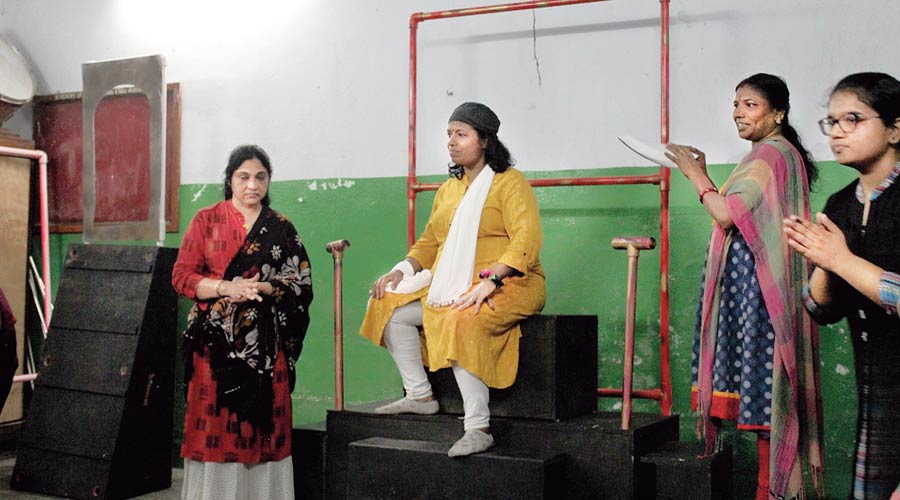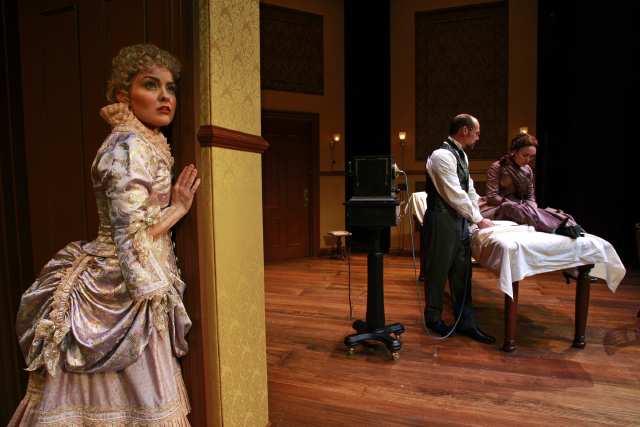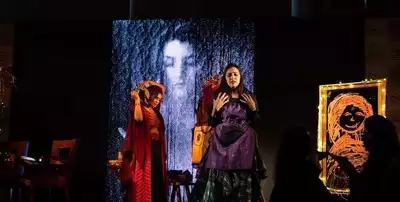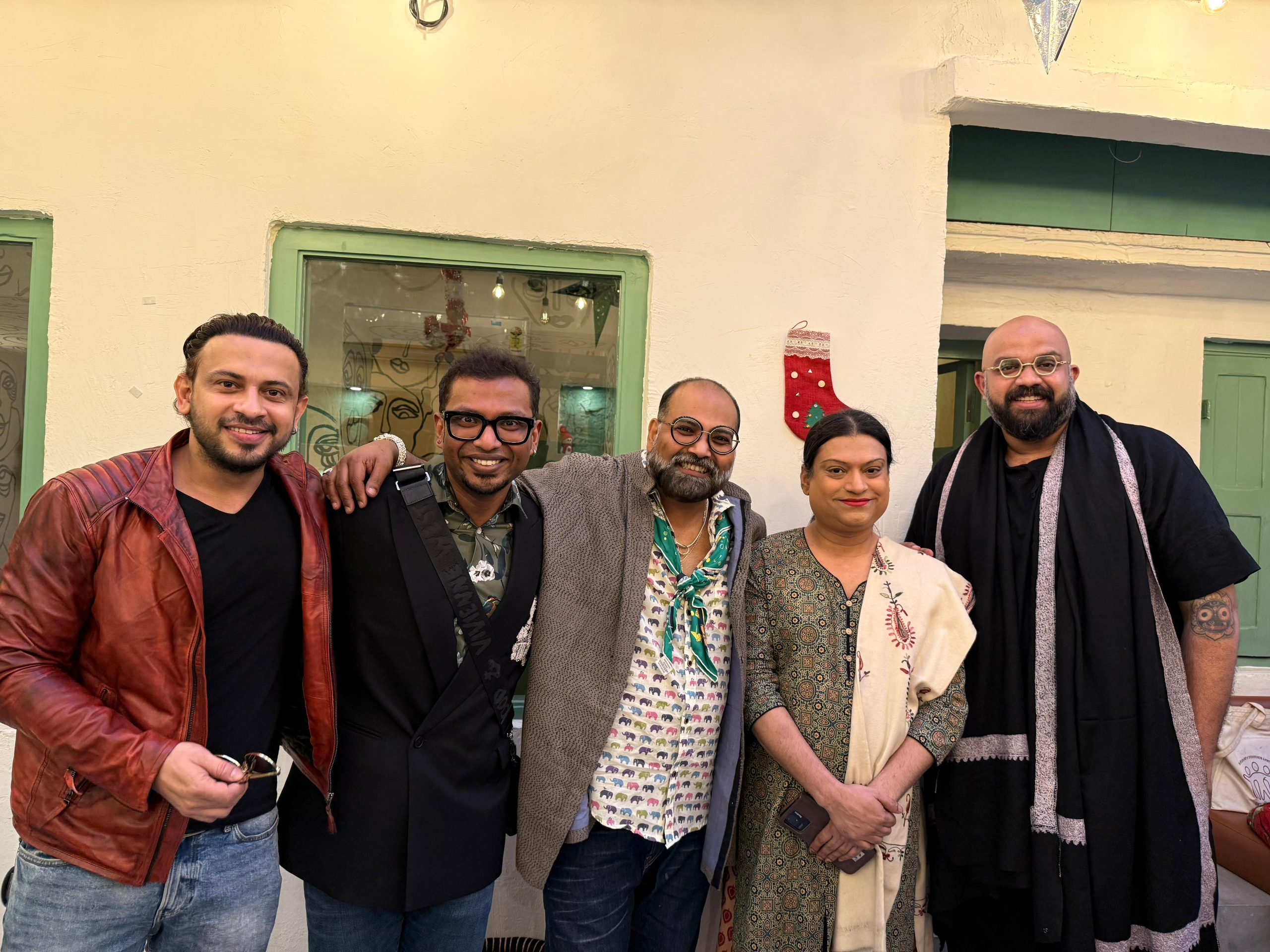Theatre as an art form has always been an avenue of resistance. People have used it to express their sentiments of dissent, love, protest, passion and everything in between. Even in the case of gender expression, theatre has played a key role in helping people become who they want to be, even if they do so only as a staged self and not in actual reality.
We see in today’s day and age how theatre in the form of Broadway and other elite set-ups has been the face of the upper class, whereas street plays (call nukkad nataks in Hindi) have acted as a form of entertainment as well as protest for the oppressed classes.
Despite the inclusive nature of theatre and allied performance arts, by itself, theatre has not been inclusive in representation and access to performances. The representation of women has been at an all time low, and even if they are represented, it is not accurate and authentic. Take for example Kathakali, the dance form originating from Kerala, known for its theatrical expressions and performance, did not allow women to perform for the longest time. Women were confined to their households and female characters were played by men only. There has however been resistance to this tradition and in recent times, we do see women performing Kathakali.
The problem however, is not just about representation. Over the centuries theatre, as mentioned before, there has seen significant dominance of men. The stories, characters, concepts and even the social issues that have been depicted, have either been about men, or through the gaze of men.

Male gaze has etched itself into theatre, thereby creating a challenge for women and men alike to overcome it and to strive against the internalised misogyny and sexism that has been a part of it. Vivianne Forrester, an essayist and literary critic, writes excellently about the male gaze, “We don’t know what women’s vision is. What do women’s eyes see? How do they carve? Invent, decipher the world, I don’t know – I know my own vision, the vision of one woman, but the world seen through the eyes of others. I only know what men’s eyes see.”
Gender Equality and Diversity in European Theatres, was a recent study conducted by the European Theatre Convention (ETC). The results stated that only four women are mentioned in theatre programmes for every six men, and in the case of playwrights, directors and technical staff, the proportion of men is more than that of women. It is worthy to note that women dominate the role of “hairdressing” and “costumes”, because these jobs are mostly considered ‘feminine’ and perhaps even easy and meek, hence suited for women. Considering the number of women directions is marginal internationally as well as locally, is it really talent to direct that is missing from women or is conscious gender discrimination still dominating the local and global theatre circles?
To tell more stories of women and better the portrayal of gender, feminist theatre started emerging during the 1970s. At the same time, there have been attempts to destabilise the male gaze through feminist theatre. The origins fo western theatre have been from ancient Greece and Rome, where the former began their tradition of theatre with tragic plays around 532 BC.
Similar to what was discussed about Kathakali in India, in Greek culture, women were considered inferior to men and therefore, women were not allowed to be a part of theatre and other performing arts. They were not allowed to be on the stage because it was considered “dangerous.”
Men played male characters as well as female characters, back then. “The Greeks believed that allowing women to perform publicly would be too dangerous and that having men portray them neutralised the danger.” The Romans had a similar view of women, which made it impossible for them to make it onto the stage. But over time, Roman plays did start to have a few female actors.
Also read: How Feminist Theatre Emerged in India

Gender Equality and Diversity in European Theatres, was a recent study conducted by the European Theatre Convention (ETC). The results stated that only four women are mentioned in theatre programmes for every six men, and in the case of playwrights, directors and technical staff, the proportion of men is more than that of women.
It is worthy to note that women dominate the role of “hairdressing” and “costumes”, because these jobs are mostly considered ‘feminine’ and perhaps even easy and meek, hence suited for women. Considering the number of women directions is marginal internationally as well as locally, is it really talent to direct that is missing from women or is conscious gender discrimination still dominating the local and global theatre circles?
When we discuss making performing arts gender-inclusive, we must ensure that representation does not restrict the female gaze to a White, upper-class point of view. As we try to eliminate sexism from theatre by making women-centric plays, we must be cognisant of the fact that other marginalised genders, Bahujan women and other individuals from oppressed locations cannot be erased, and that regressive bio essentialist takes are not made the central focus of feminist theatre or arts
Having examined the historical aspects of theatre, it is thus revealed that a sort of socio-psychological conditioning covers the theatre arena and is also responsible for systemic gender disparity. Since theatre mirrors the society, and our society by and large is sexist, it is accurate to conclude that gender and gender roles have been the reason for the disparity in performing arts. Sometimes, it may not look like conscious marginalisation, but the internalised gender bias reflects when it comes to making the space inclusive and distributing power equally.
Aurat (1979), aplay by Safdar Hashmi was an important street play that brought to light important issues of sati and dowry to the masses. One of the first plays in India that explored lesbian relationships was Vijay Tendulkar’s Mitrachi Goshta (1981), which was although crucial in that time and age, not adequately representative of lesbian women.
The five plays by Mahasweta Devi, namely Mother of 1084, Aajer, Urvashi O’Johnny, Bayern, and Water, have also been considered as landmark plays in the emergence of feminist theatre in India. Eventually, over the years, theatre festivals and workshops across India and the world started addressing women-centric issues, thereby, although marginally, interrogating the male gaze and consequently giving importance to the female gaze.
When we use terms like male and female gaze, we may take a bio essentialist perspective to it, which we need to of course, refrain from. For instance, the web series Fleabag, which has been adapted from the play of the same name, has been known for its feminist perspectives.
However, a particular monologue by Belinda (played by Kristin Scott Thomas), a soliloquy on menopause which has been extremely popular, is about how ‘women’ have to deal with menstruation, when in reality, all menstruators are not women and all women are not menstruators. Not ignoring the importance of the monologue in terms of experiences of the women who menstruate, but we need to make sure that theatre and films are being revamped to be inclusive.
When we discuss making performing arts gender-inclusive, we must ensure that representation does not restrict the female gaze to a White, upper-class point of view. As we try to eliminate sexism from theatre by making women-centric plays, we must be cognisant of the fact that other marginalised genders, Bahujan women and other individuals from oppressed locations cannot be erased, and that regressive bio essentialist takes are not made the central focus of feminist theatre or arts.
Also read: Here Is A List Of 5 Feminist Theatre Acts That You Can Watch Or Read
Featured Image Source: Times of India
About the author(s)
Meghna(she/her) is a humanities student from St. Xavier's College, Mumbai who is fond of everything sociology and psychology. She loves animals, reading and art




